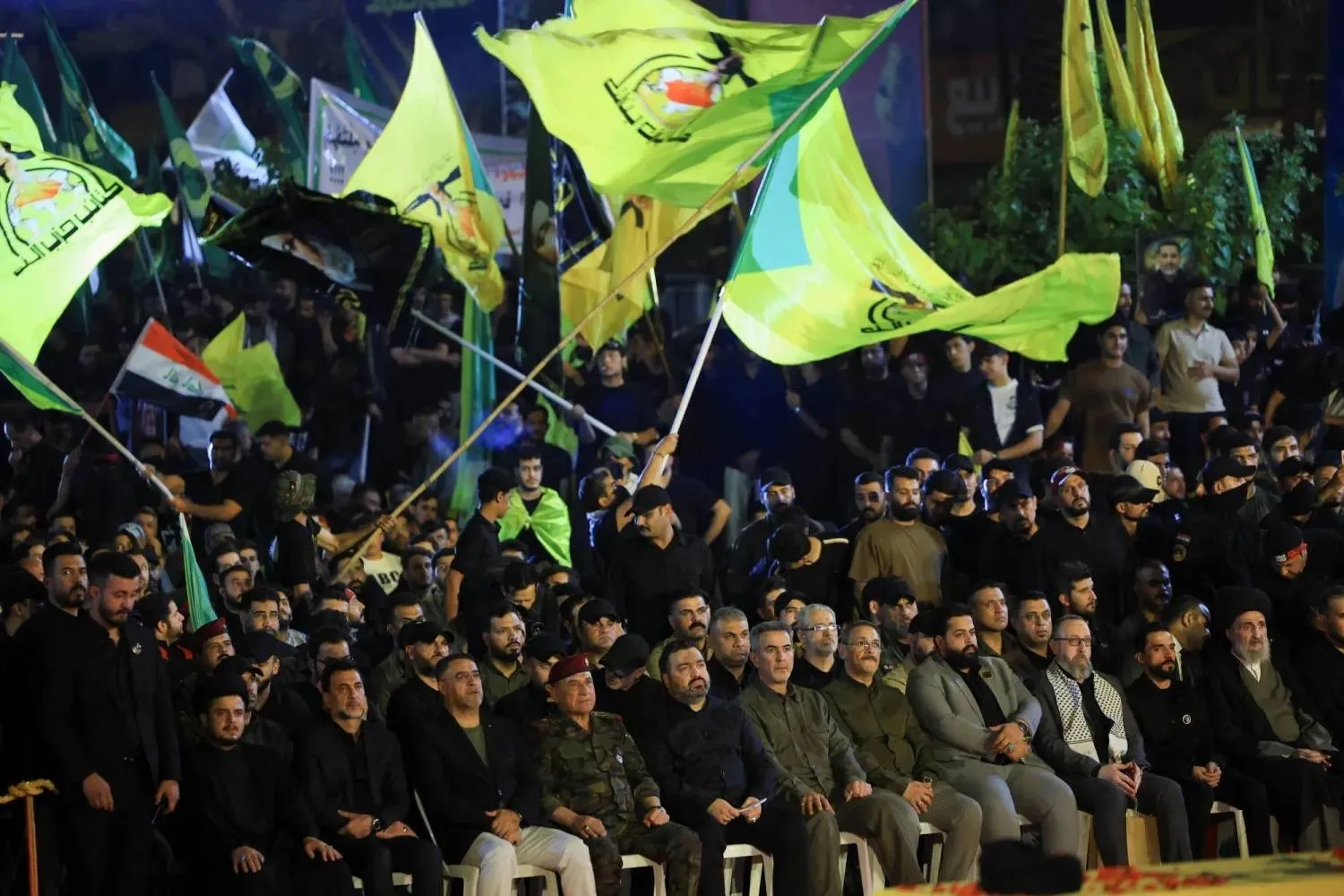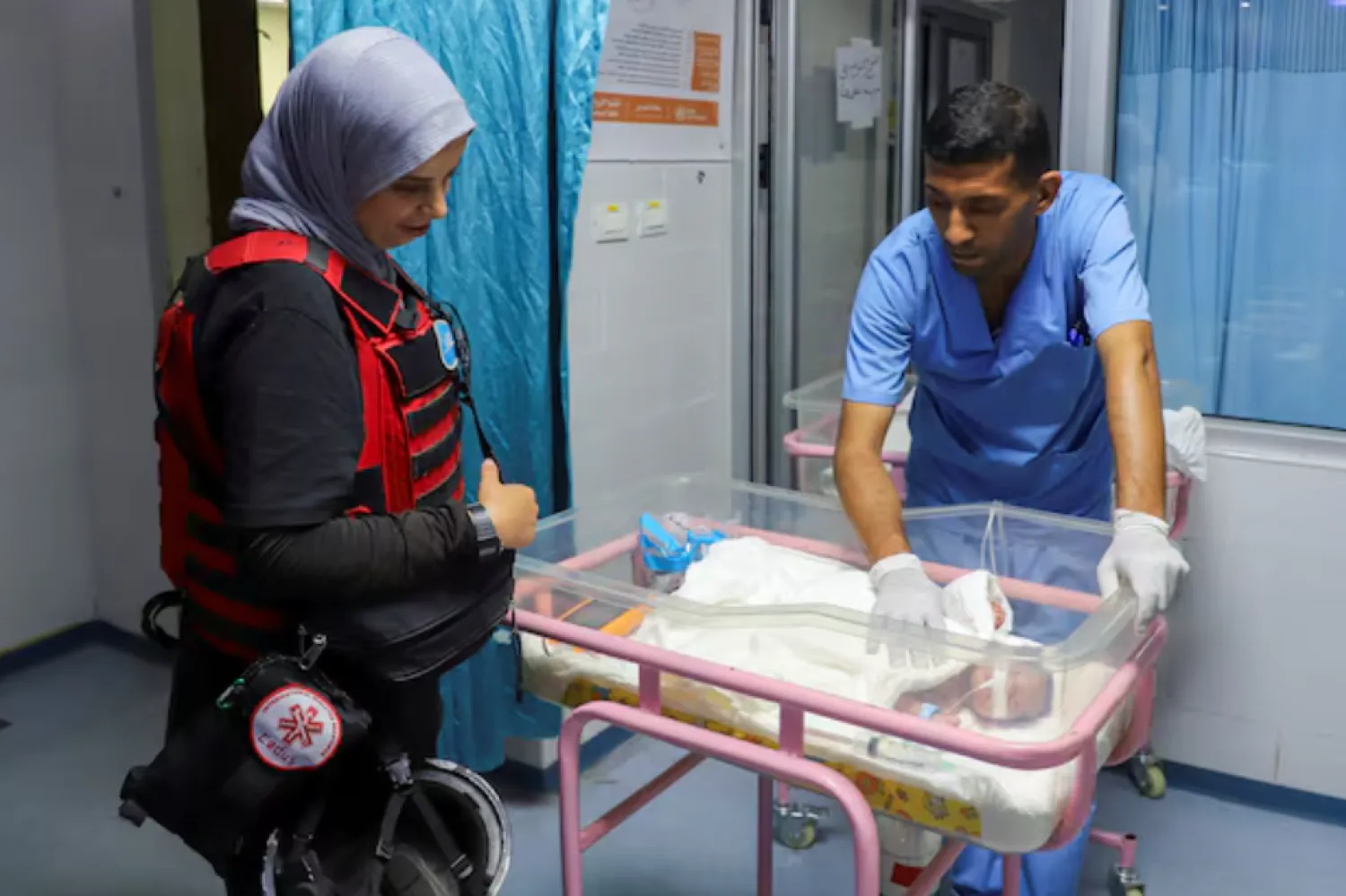Two years ago, Iraq’s armed factions were eager to make their presence felt in the “Al-Aqsa Flood” scenes. That enthusiasm faded in the months after October 2023 amid what officials described as highly complex negotiations between the government and those groups to keep Iraq out of the war.
There is no evidence that Iran has lost Iraq entirely, as it did in Syria. But it has begun to lose round after round to the Americans in Baghdad’s arena, while its proxies have grown accustomed to living peacefully alongside “the two most dangerous men in the world these days, Donald Trump and Benjamin Netanyahu,” as a former Iraqi minister put it.
Politicians in Baghdad cite three “boxing rounds” that the Americans have won over the Iranians: the release of Israeli researcher Elizabeth Tsurkov from Kataib Hezbollah custody without a deal; the withdrawal of the Popular Mobilization Forces (PMF) law that was ready for a parliamentary vote; and, before that, a long truce with US forces even during the 12-day US-Israeli attacks on Iran.
Two years after the “Unity of Fronts” declaration and following Hamas’s Oct. 7 operation, Iraq’s factions were missing from the closing scenes of the “Flood.” For many, that is good news — for now.
Searching for “Plan B”
A Shiite politician who recently visited Tehran returned to Baghdad with a vague outlook ahead of campaign season for the November 2025 parliamentary elections.
The politician, who officially launched his campaign on Oct. 3, said Tehran is looking for a “Plan B” to avoid a knockout blow. “It may surprise many with what it has in store,” he said, suggesting Iran might “make up for Syria elsewhere.”
Shiite politicians in Baghdad, he added, have a habit of “reading the election book in a language the Iranians understand.”
But how accurate is such a forecast? There is no clear metric to measure Iranian influence in Iraq. Analysts remain divided over whether it has diminished to the point that, after Syria’s “domino” fell, its allied groups in Iraq have also tumbled.
In reality, Iraqi public opinion — and the partisan instruments that shape it — often revolve around narratives that are constructed, improvised, or deliberately ambiguous.
Factions Ask, Iran Doesn’t Answer
Reports of a possible war against Iran have put Baghdad’s factions under pressure. According to sources, leaders of several groups met in late September 2025 and sent a consultation request to Iran’s Islamic Revolutionary Guard Corps (IRGC) seeking guidance on what to expect if war breaks out.
A senior member of a faction recently added to a US terrorism list said Tehran has yet to respond.
At the same time, an IRGC team tasked with managing Shiite electoral alliances in Iraq has been holding meetings with figures in the Coordination Framework coalition. Cross-cutting sources described the team as “Iran’s election committee,” overseeing the distribution of Shiite parties across competing lists — a group that previously engineered influential coalitions in past parliaments.
But this “expert” committee failed to convince Shiite party leaders to implement Tehran’s proposed blueprint to merge lists or reshuffle candidates in key constituencies across central and southern Iraq.
Some Shiite figures accused of defying Iranian directives belong to resistance factions that briefly joined the “Al-Aqsa Flood” front before retreating to the “backyard,” seeking new sources of leverage.
Empty Spaces
In cities liberated from ISIS, Sunni parties are running relatively stable campaigns. Many sense that the loosening of Iran’s grip has allowed them to move more freely — though few dare say so aloud. There are visible efforts to remain cautious and avoid provoking the “Axis of Resistance.”
Former parliament speaker Mohammed al-Halbousi — ousted in 2023 by a Tehran-aligned coalition — is now staging a strong comeback. His associates attribute that to “personal skill and precise calculation,” though it also reflects his use of spaces left vacant by waning Iranian influence, whether by design or under US pressure.
Still, Sunni rivals seeking to counter Halbousi need alliances with Shiite power brokers to secure political “horses to bet on.” In Nineveh, Salahuddin, and Kirkuk, several Sunni figures are shaping their lists in coordination with factions loyal to Iran’s Supreme Leader Ali Khamenei.
For that reason, Iraq’s “empty” spaces may be little more than a mirage.
According to a Shiite politician, powerful factions recently received Iranian requests to help relocate activities of allied groups from other “resistance” countries to Baghdad — and that has already begun.
Sources told Asharq Al-Awsat that Ali Larijani, secretary-general of Iran’s Supreme National Security Council, is overseeing arrangements to assist Tehran’s war-strained proxies. Larijani was recently in Beirut, where he said before departing: “Hezbollah is quickly regaining strength and will shift the balance.”
“Bin Laden’s Fate Is Not Inevitable”
Four Iraqi factions — Harakat al-Nujaba, Kataib Imam Ali, Ansar Allah al-Awfiya, and Kataib Sayyid al-Shuhada — were recently added to the US State Department’s list of Foreign Terrorist Organizations, bringing Iraq’s total to six.
A few years ago, that same list included al-Qaeda leader Osama bin Laden.
Asaib Ahl al-Haq was designated in 2020, while Kataib Hezbollah has been listed since 2009. Both groups still hold seats and cabinet posts in parliament and government.
“You don’t have to share bin Laden’s fate just because you’re on that list,” said a former Iraqi minister who served in Adel Abdul Mahdi’s 2018–2019 government. “Iran-backed groups are now learning to coexist with the world’s two most dangerous men — Donald Trump and Benjamin Netanyahu.”
In Baghdad, voices within Shiite parties have begun to ask whether the US president is deliberately delaying Israeli strikes in Iraq, leveraging American pressure on the government and decision-makers to sever ties with Tehran.
“Will Trump Protect Us from Netanyahu?”
The same former minister, who asked not to be named, said Washington has won battles inside Tehran because Iraqis responded to pressure at a moment of Iranian confusion. “For months,” he added, “Shiite factions have been asking: Will Trump really protect us from Netanyahu? It appears so.”
He sees signs of the “Plan B” Iran is developing: “New Shiite political players who stayed out of the Al-Aqsa Flood fallout are now trying to rebrand themselves — updating their radical image with a civilian face to escape the danger zone.”
It’s like a man standing in a sniper’s sights, a laser dot fixed on his chest. He cannot move right or left — any motion could be fatal. The sniper will not tire as long as the target remains frozen.
“What if the target changes his face, name, and behavior?” the former minister asked. “Some militia leaders are now toying with the idea of returning weapons to storage and shaving their beards — which could make them very useful to both Washington and Tehran.”
A Shiite politician close to the scene agrees: “A militia commander thinking that far ahead will be valuable to Iran once the storm calms.” He added that “four years with Trump is a long time — and even longer with Netanyahu. Survival demands change.”
Autumn nights are settling over Baghdad amid a blazing election summer. Even as talk grows of a new Iran-Israel war, militia leaders who once spread out maps of Tel Aviv to plan rocket strikes are now opening their offices to liberal and secular elites — for long conversations about elections whose intrigue has already begun.









